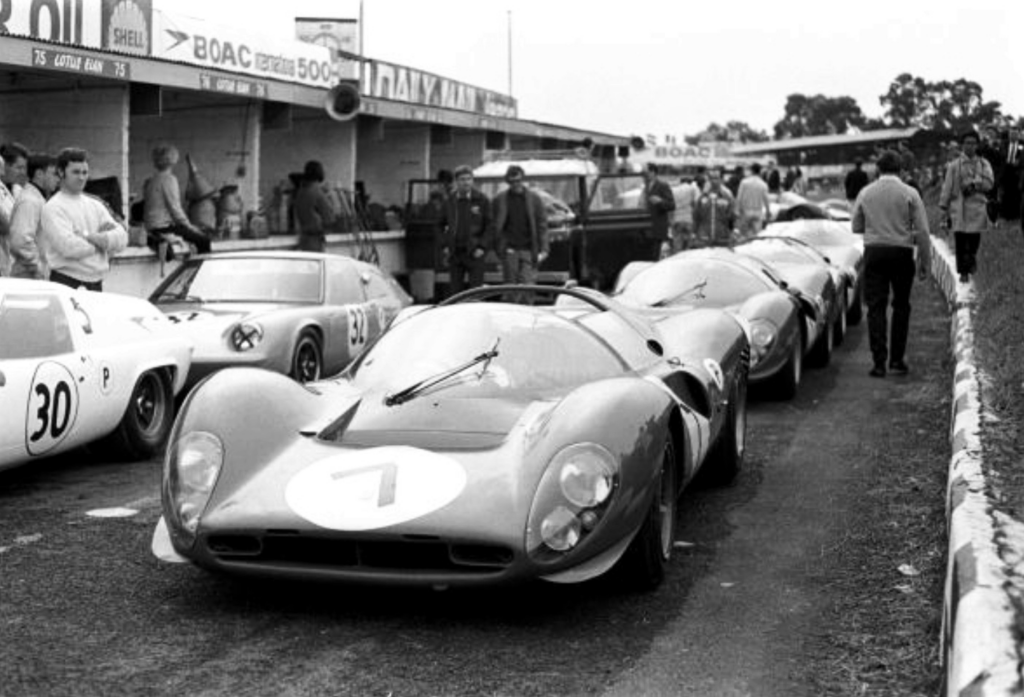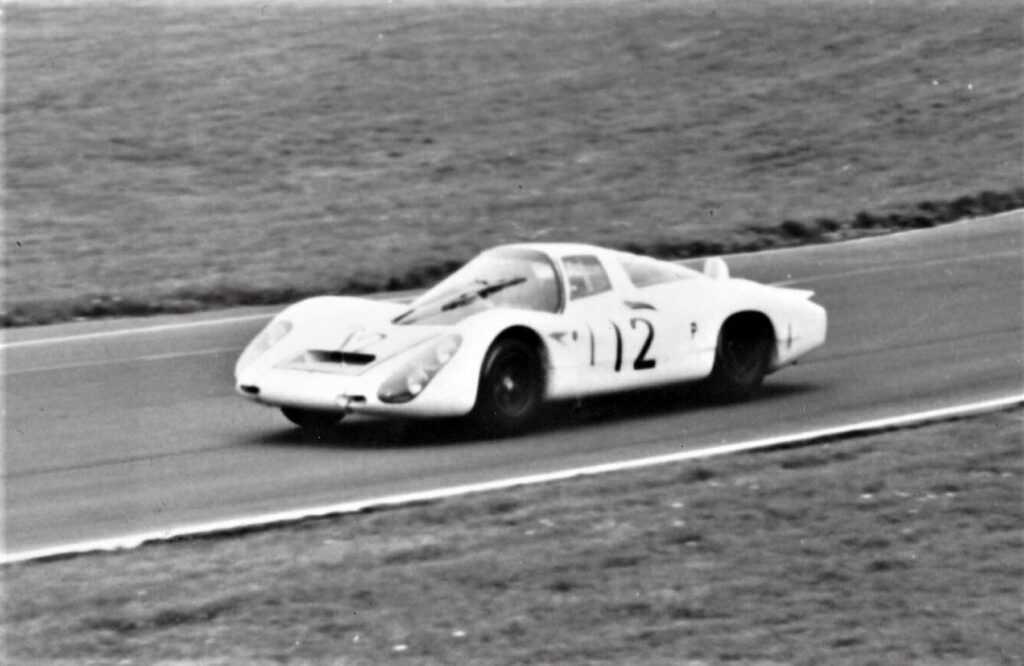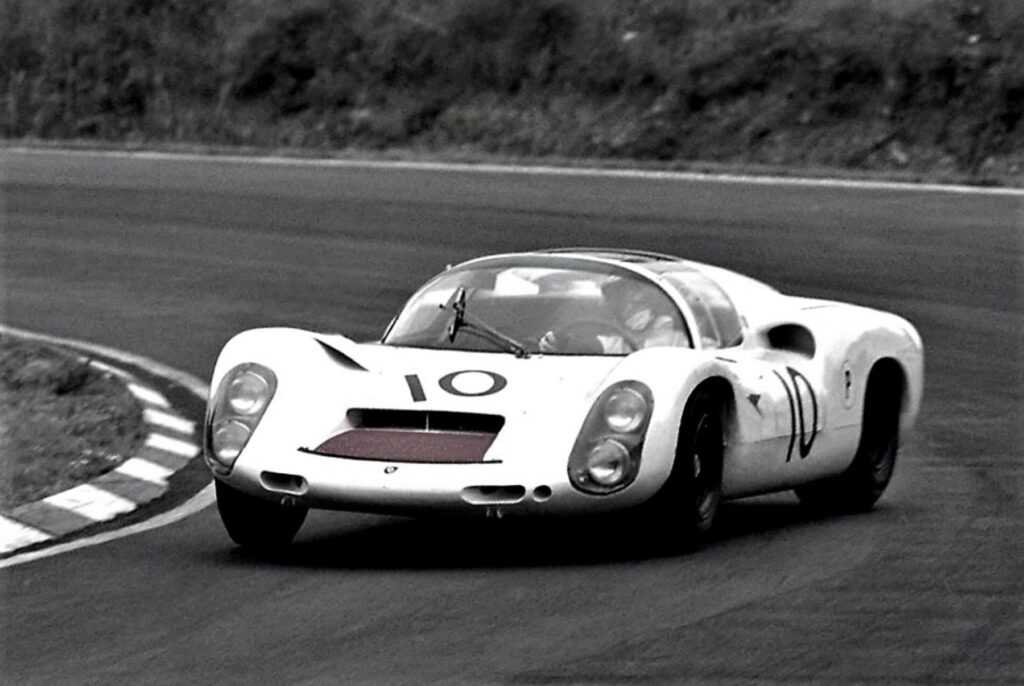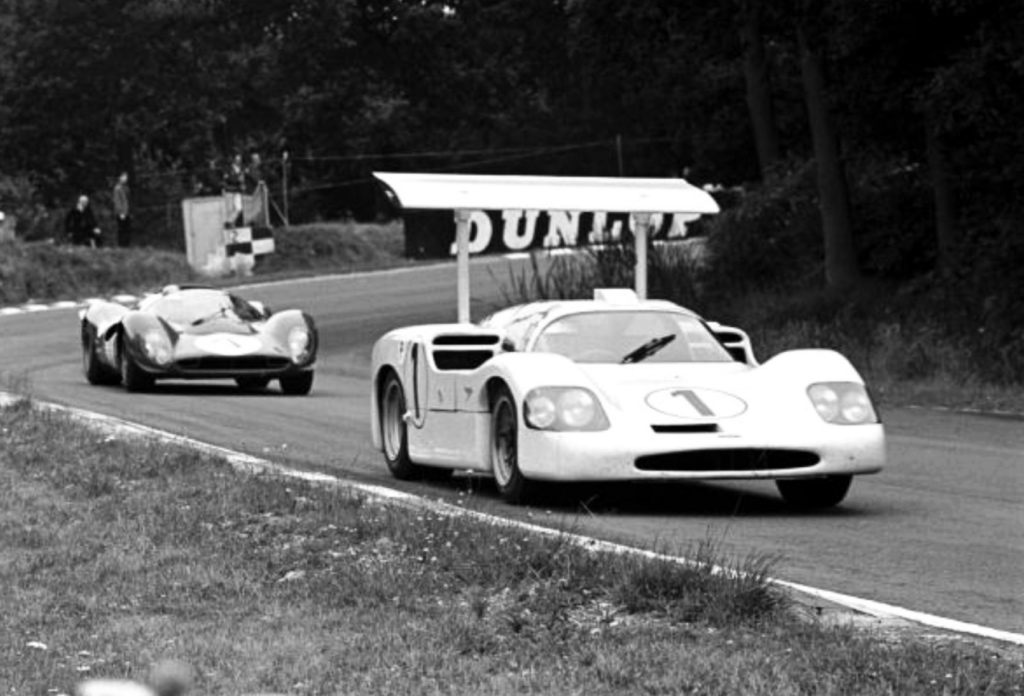By Terry O’Neil
Brands Hatch Circuit, situated in the rural county of Kent, was the venue for the eighth round of the Manufacturers’ Championship for prototype cars on July 30, 1967. It was the first time that Brands Hatch had been used for the series and the drivers found that it was quite different from the other continental venues that had their long sweeping curves and lengthy straights. By contrast, Brands Hatch was shorter in length, 2.7 miles, with hills and tight corners to contend with which proved a challenge to the engineers who were responsible for setting up the cars.
Whilst Ferrari just missed out on victory in England at Brands Hatch on that day, the results were significantly good enough to help Ferrari achieve its ultimate goal for 1967 in winning the Manufacturers’ Championship for prototype cars, thus taking revenge on Ford who had just pipped Ferrari to the Championship in 1966, and Porsche who had been leading the Championship up to this point in 1967.
Sefac Ferrari sent three identical open-top 330 P4s for Amon / Stewart, Scarfiotti / Sutcliffe, and Hawkins / Williams, while a 412P was entered by Maranello Concessionaires for Attwood / Piper. Lined up against them and determined to secure the Championship were five Porsche Works entries consisting of four 910 models for Hill / Rindt, Siffert / McLaren, Elford / Bianchi, Schutz / Koch and a 907 model, the latter for Herrmann / Neerpasch to drive.
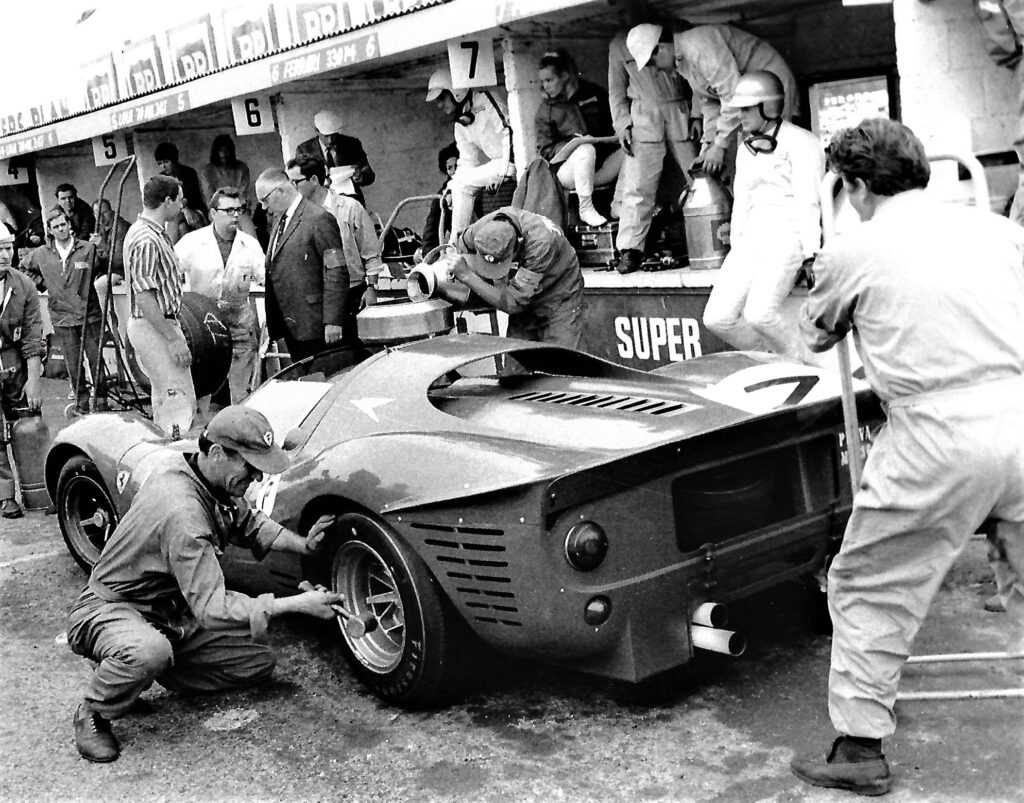
The Scarfiotti / Sutcliffe Ferrari P4 making one of its two planned pit stops for fuel and driver changeover.
Five American V-8 engined cars were also competing in the prototype category. A Chaparral 2F was prepared for Spence / Phil Hill, three Lola T-70 cars for Hulme / Brabham, Westbury / DeUdy, and Surtees / Hobbs and a Mirage for Thompson / Pedro Rodriguez. Altogether there were twenty-one prototype cars entered into the race which also included fourteen cars entered in the Sportscar Championship class. It was in this category that Ford came to the fore, where four GT40s were up against three Ferrari 250LMs in the over two-liter class and three Porsche 906s in the under two-liter class.
Qualifying ended with two Lolas and the Chaparral on the front row of the grid, two Ferrari P4s on the second row, and the third row having two Porsche 910s and the other Ferrari P4 in place. Surtees’ Lola led off from the front row followed by Hawkins and Scarfiotti in P4s from the second row and Spence in the Chaparral.
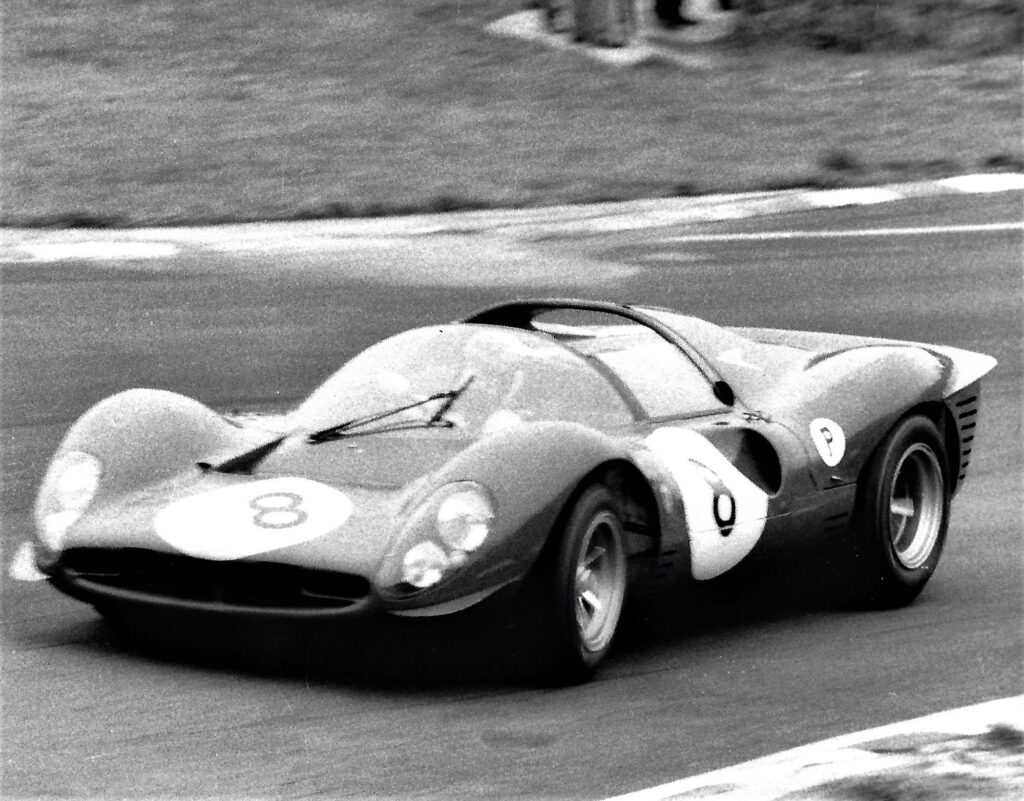
The Ferrari P4 driven by / Williams led the race briefly but finished in sixth place having covered 204 laps.
Hawkins took the lead on the second lap, with Hulme inching ahead of Phil Hill for fifth place. Hawkins’ lead would prove to be short-lived as first Hulme and then Spence and Scarfiotti went past him, relegating the Ferrari 330 P4 to fourth place.
Over the next few laps, Hulme began opening up a gap and set the fastest lap of the race in the process. Behind him, Spence and Scarfiotti were holding down their positions waiting for Hulme to falter. They didn’t have too long to wait as on the hour Hulme’s Lola coasted into the pits and out of the race with a broken rocker arm. Spence, having inherited the lead, made the most of his opportunity with a clear track ahead of him, using the powerful Chevrolet engine to open up a gap before coming into the pits for a driver change-over with Phil Hill, and losing the lead as Rodriguez with the Mirage had climbed up the field and had the momentum to take over the lead, with Siffert’s Porsche behind him. It was to be a short-lived situation because neither of the cars had pitted yet, so when they did Hill in the Chaparral regained the lead.
After the round of pit stops the action on track became frantic, as Phil Hill had to make his way to the pits with a flat tire, and Dick Thompson undid Rodriguez’s hard work by spinning the Mirage into an earthen bank on lap 87, and out of the race.
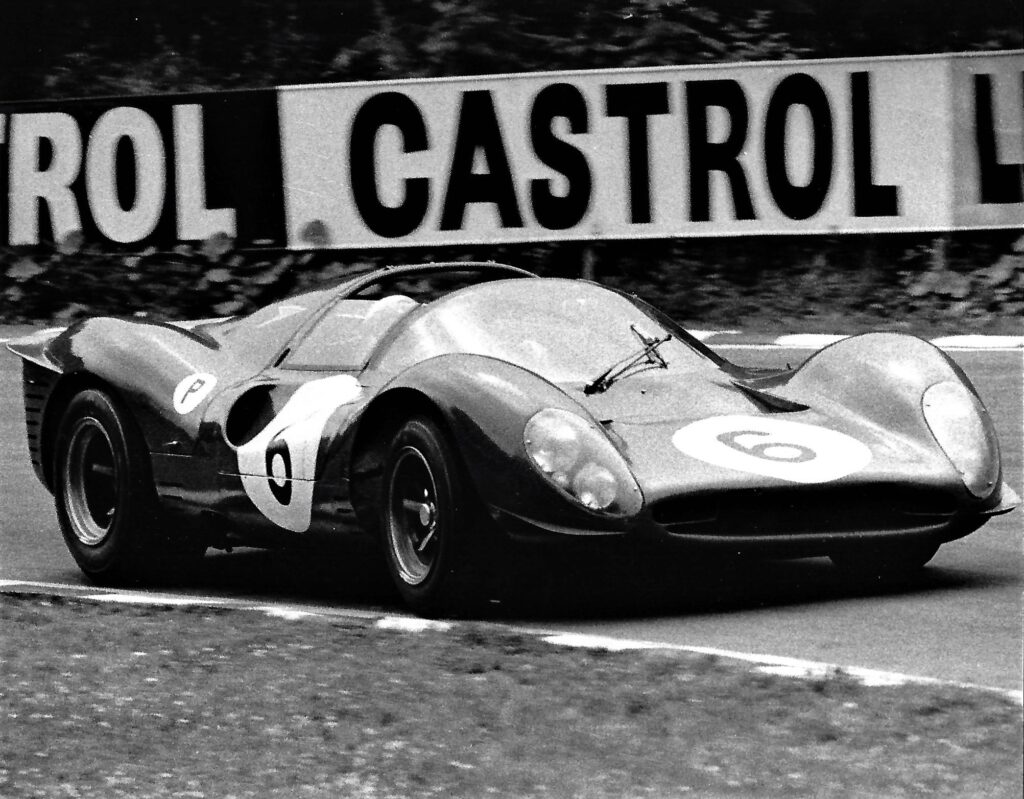
A Ferrari P4, #6, was driven by Chris Amon and Jackie Stewart to second overall, covering 211 laps, sealing the Manufacturers’ Championship for prototypes for Sefac Ferrari.
At half distance, the Amon / Stewart Ferrari P4 led the way from the Siffert / McLaren Porsche 910, Phil Hill’s Chaparral, and the Hawkins / Williams Ferrari P4. Generally, the attrition rate was low, with only seven of the thirty-five starters pulling out of the race. With the Porsche driven by Graham Hill being one of those cars, the Porsche team made a tactical change to their driver pairings and replaced Koch with Rindt in the Schutz car as the Austrian was quicker than Koch.
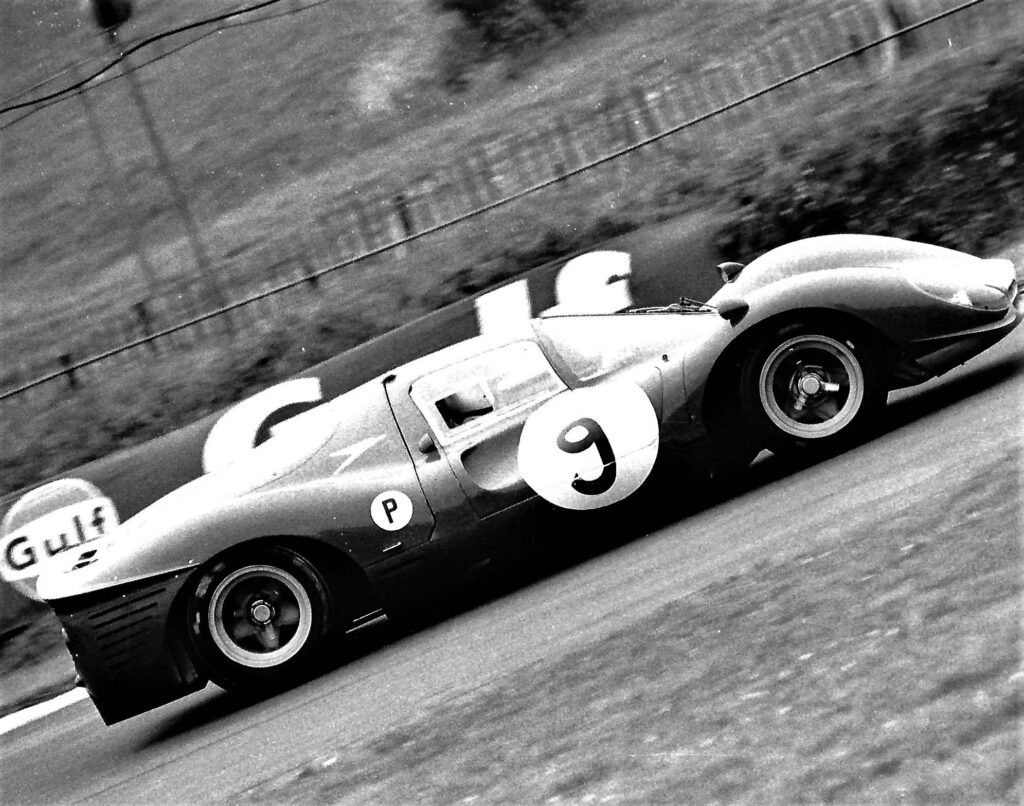
The Ferrari 412P entered by Maranello Concessionaires and driven by Piper and Attwood to a seventh place finish, covering 202 laps.
Having spent a considerable amount of time in the pits because of fuel problems in the first half of the race the Surtees / Hobbs Lola made it up to seventh place before the engine seized, ending its race, giving Hawkins breathing space, as he had troubles of his own when the rear bodywork of his Ferrari came adrift and he had to pit to have it wired back together again.
The next series of driver changes put Spence back in the Chaparral in front of Siffert’s Porsche 910 and Amon’s Ferrari P4 with Spence widening the gap at the front as each lap went by. Attention was drawn to the battle for second place which would effectively decide the outcome of the prototype championship. Less than two hours of the race remained when Siffert pitted for the final time, and after an efficient stop came out in third place behind Amon, but knew that Amon would also have to stop soon. Amon was motoring in top form and building a cushion over the Porsche which was now heavy with fuel again. At the last possible moment, Amon pitted, stayed with the car, and was out on track again within forty seconds and having a cushion of a minute to the Porsche. It was enough to secure the second spot as Siffert’s Porsche could do nothing to put up a challenge. The Porsche team had to accept defeat in the prototype championship by a five-point margin.
Meanwhile, the Chaparral motored on without any unforeseen trouble to take the overall victory with only Amon’s Ferrari on the same lap as the Chaparral as the flag fell.
The first car in the Sports Car category to finish was the Porsche 906 driven by Tony Dean and Ben Pon in eighth place overall, ahead of the Ferrari 250LM driven by Hugh Dibley and Roy Pierpoint.


